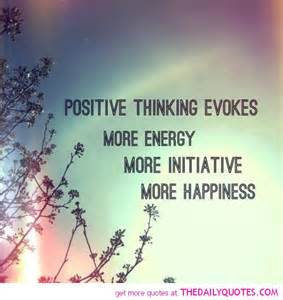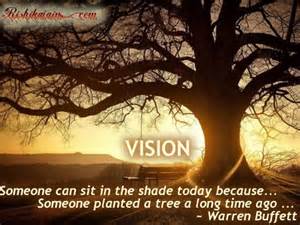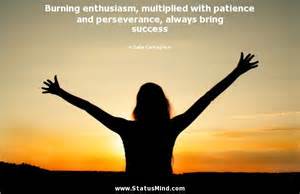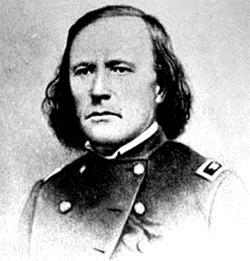
Last week, I talked about being open to the potential of change and explored eight ‘potentials,’ eight possibilities that come about as a result of change: opportunity, time to grow, flexibility, improvement, strength, new beginnings, chances to ‘rise to the occasion,’ and seeing things through a different lens. As I wrote that post, I kept thinking about a mountain man’s “possibles bag.”
A mountain man is a male trapper and explorer who lives in the wilderness. Mountain men were most common in the North American Rocky Mountains from about 1810 through the 1880s. Many mountain men were employed by Fur Trading companies to trap beaver and other animals for their fur (think Jim Bridger and Kit Carson). When trapping was no longer lucrative mountain men served as guides for the pioneers making their way west.
Jim Bridger Kit Carson
Considering the life of mountain man, it was necessary that critical items be carried at all times, so a staple of a mountain man became the “possibles bag.” The “possibles bag” contained everything that could possibly be needed for the day: black powder, powder measurer, flint and steel, lead balls, knives, and some personal items. Other items might include tools for trap repair, tobacco, sugar, and items to trade with native tribes. While several items were common to all “possibles bags,” every bag had its own unique contents that reflected the character of its owner. 
Some changes have us “roaming the wilderness,” that area where the old and the new overlap. I liken this wilderness to what the early pioneers felt when they ventured beyond their “comfort zone.” For them, there was a lot of confusion with new sights, sounds, and experiences. The rules they followed in their former place no longer applied, yet new rules for this new territory, this “wilderness,” had not yet been established. The further they got on their journey, they could no longer see where they came from and they couldn’t see exactly where they were going. At times there was probably a sense of feeling lost and at other times these pioneers had to gain a new sense of direction. There had to be much fear of the unknown in the new, the changed environment.
Leaving the comfort zone Heading into the wilderness
After ending something and letting go, how can you tell if you are in the wilderness? If you are excited and overwhelmed by the possibilities after ending something or letting go, you have probably “crossed over” into the wilderness. Others ways to tell include a feeling of being lost and scared of making a wrong decision or choosing the wrong path; a strong desire to try something different; a constant worry or concern about the future; and/or, the sense that the change is a good one, but you just don’t know you are going to make it work.
Why, if this neutral zone is so “wild” and further engenders confusion and fear is it important when dealing with change? It is because out of the confusion and fear, new ideas, new discoveries, reorientations, and creativity take center stage and help propel those undergoing the change toward something they might be able to accept, something that might make their life better. We all “roam the wilderness” with change. If the change is minor, we might not even realize that we’ve moved from ending something, moved through the “wilderness,” and started a new beginning. However, if the change is major or seismic, we might spend considerable time in the “neutral zone.”
So, here is where the concept of a “possible bag” comes in. Just as the mountain men needed to carry with them at all times everything they would need for the day, so too should we carry with us things we need to help us deal with and get through the “wilderness” phase of our change.

And, just as several items were common to all mountain men “possibles bags,” so too should our “change possibles bags” contain items necessary for our “survival.” What are these, you ask? Our “change possibles bags” should contain: persistence, enthusiasm, positive mental attitude, sense of humor, a new style of thinking, vision, and patience.
Persistence. Persistence is dogged determination, tenacity, perseverance. It is the ability to keep on going no matter what one may be facing or how one feels about the situation. Why should our “possibles bag” contain persistence? When we get overwhelmed by what is happening or paralyzed by being forced out of the comfort zone, it is easy for us to just give in or give up. Neither of those is an option when change is upon us. Neither of those helps us in dealing with what faces us. It is our ability to keep moving forward, to persist, even in the face of adversity that will help us continually move forward.
When we are not excited by a change or are fearful of what the change might bring, it is easy to lose sight of where we are going or to lose motivation for what we are doing. Persistence helps us maintain action and helps us produce results. While there may be comfort for us in the past or the old, we can’t get rooted in it. We need to be able to continually move forward despite the difficulties created by the change. Persistence helps us become resolute in doing this; it gives us the resolve to go on; it provides the drive.

Enthusiasm. Enthusiasm is defined as intense and eager enjoyment, interest, or approval. Enthusiasm focuses on the need to remain positive and upbeat at all times. Again, think about what happens when we encounter change. Something is different; things may be chaotic; we are being moved away from our comfort zone. Whenever there is change, issues will arise and it is easy to give up and give in to the “issue.” Enthusiasm needs to be a staple in our “possibles bag” because if we can maintain excitement and enthusiasm, we are able to effectively deal with whatever issue the change may be presenting.
When dealing with change, enthusiasm can make the difference between success and failure. If we mope and fight the change, we may be doomed. If we cope and look for ways to co-exist with the change, we will thrive. Coping and co-existing with change may mean we need to be creative to do so, and enthusiasm can generate creativity which can lead to innovation which can lead to coming up with ways of effectively and positively dealing with change.
Enthusiasm is contagious and can spread from person to person quickly and easily. It is difficult to be around someone who is positive, upbeat, and has a zest for life without some of that same feeling catching hold to us. This is always a good thing when one is dealing with something that is stressful or chaotic or unpleasant.
Positive Mental Attitude. A positive mental attitude is the belief that one can increase achievement through optimistic thought processes. Our “possibles bag” needs to contain this because with those who make use of this state of mind continually seek to find ways to win, to overcome, to find a desirable outcome no matter what the circumstances. A positive attitude brings optimism into one’s life. This attitude helps fight negativity, undue worrying, and a feeling of hopelessness. When struggling with change, a positive attitude: helps us expect success (vs. failure), inspires us, gives us strength to continue and not give up, makes us see the opportunities and blessings in challenges and problems, strengthens our belief in ourselves and our abilities, gives us confidence (to persist and persevere), and produces energy.

Sense of Humor. A sense of humor highlights the need to laugh a lot, laugh often, and to lighten the day with levity. A sense of humor also means that we are able to see the humor in the craziness of life. With this in our “possibles bag,” we are better able to preserve our sanity when things get chaotic or we get overwhelmed with the stress that might come with change and transition. Using our sense of humor is a very effective coping mechanism and an easy stress management technique.
There is no doubt that there are many challenges when dealing with change and transition. When our comfort zone shifts, it is easy to feel as if the world has fallen out from under us. A sense of humor can help us feel as if we are on firm ground again and help shift us back into or closer to our comfort zone. Laugher is often the result when we exercise our sense of humor. Laughing can help us deal with the most difficult of situations.

When undergoing change and transition, we sometimes feel as if we have no control; the forces of change have taken away our “power.” Stress and tension are a result of this. A sense of humor has a way of putting us back in the driver’s seat; of helping regain some control, of dispelling the tension, and of relieving the stress. Because change and transition are often accompanied by emotional and mental stress, humor and its accompanying laughter help keep our emotional, mental, and even physical health in balance. Humor can help us develop: peace of mind, hopefulness, joy, cheerfulness, resilience, an uplifted spirit, and a good sense of life.
A good sense of humor can also help us keep things in perspective. If we remember that we aren’t the only ones undergoing changes and transitions, having a sense of humor about life’s difficulties can help us become closer to those dealing with the same or a similar situation. In a way, this helps bring a measure of “normalcy” to what one is experiencing. Whatever we may be dealing with may not seem so overwhelming or frightening.
New style of thinking. Dealing with the unexpected is one of the most difficult things anyone can face. And, change certainly can bring about a lot of “unexpected.” The unexpected moves us out of our comfort zone before we realize what is happening. When faced with the unforeseen, traditional or logical thinking may not provide us with the best option to deal with the situation. We may be better served thinking creatively or divergently. A new style of thinking should be in our “possibles bag” because following the crowd may not be the best way to deal with change. Sometimes we have to march to the beat of a different drummer and a new style of thinking (or divergent thinking or irreverent thinking or innovative thinking – you can pick the term) helps us do so.
When we are in the midst of an overhaul or decision making that may have a long-term effect, doing so with the ‘old way of thinking’ may not result in a satisfactory outcome. Albert Einstein said, “The definition of insanity is doing the same thing over and over and expecting different results.” So, in an overhaul or a quick decision situation, a new style of thinking may be required to prevent us from appearing (or going) insane. A new style of thinking presents a method of decision making that goes beyond the conventional; the ‘same old, same old.’ Please note that there is nothing wrong with conventional ways of doing things or making decisions when in a status quo situation. But, when faced with change and transition that present major differences, what worked in the old may not work in the new. In a changed environment, when we start “getting down on ourselves” because things just aren’t working out, they may not be working out because we are doing what Anthony Robbins indicates, “If you do what you’ve always done, you’ll get what you’ve always gotten.”

Viewing things from a new angle is important when attempting to successfully navigate the seas of change. Remember, if we want the end result to be different, our actions and decisions must also be different. However, the difference may come about by doing something as simple as tweaking what we already have.
Vision. Vision is a vivid mental image. The image is usually something that you want to see happen. With change, something becomes different. We are moved out of the comfort zone. Both our personal and professional lives can become unsettled. Having a vision of what one wants is a way of helping us deal with the unsettled nature of things. If we can picture something happening and really desire that to happen, we might work hard to make that image, that vision come true. In dealing with change, vision is what provides direction to one moving toward a “new beginning.” Vision needs to be in our “possibles bag” because it provides purpose and meaning and in doing so, gives hope, enthusiasm, importance, and inspiration to what we hope to accomplish or what we hope to be. 
Our vision gives us possibilities. Our vision should be BIG; small ones cannot ignite the flames of enthusiasm, excitement, and passion. Remember, anything that can be imagined can become reality under the right circumstances.
Patience. Patience is the level of endurance one exhibits under difficult circumstances. Oftentimes, we may feel that a change we have experienced has brought with it a set of circumstances that we find difficult; with which we struggle. We want things to return to “normal” or to have a feel of “normalcy” and we want that RIGHT NOW. But, some things need time to work themselves out; rushing things may be the worst thing that can happen. So, patience is a necessity in our “possibles bag” because it gives us a “cooling off” period; some time with which to reflect and accept what has happened; time to think. Having patience means we don’t make hasty decisions. Patience allows us to regain some control over the situation. It gives us an opportunity to look at all the variables and the time to pick and choose what needs to be done to help us move forward, especially move forward toward the vision we’ve created for ourselves and the changed environment.

In my “change possibles bag,” I would have persistence, enthusiasm, positive mental attitude, sense of humor, a new style of thinking, vision, and patience. These are the items that I feel I would need to survive the “wilderness” phase of my change. Would your “change possibles bag” contain all or most of these? What else might you put in yours?
If you are in the midst of a change that has had something end and you find yourself in the “wilderness,” in the “neutral zone,” in the space that is in between what was and what will be, I encourage you to make sure that your “possibles bag” has some things in it that help you deal with the confusion that is often in this space; deal with the sense of feeling lost; deal with all the emotions and feelings; and, deal with the unknown. It will make all the difference for you!






